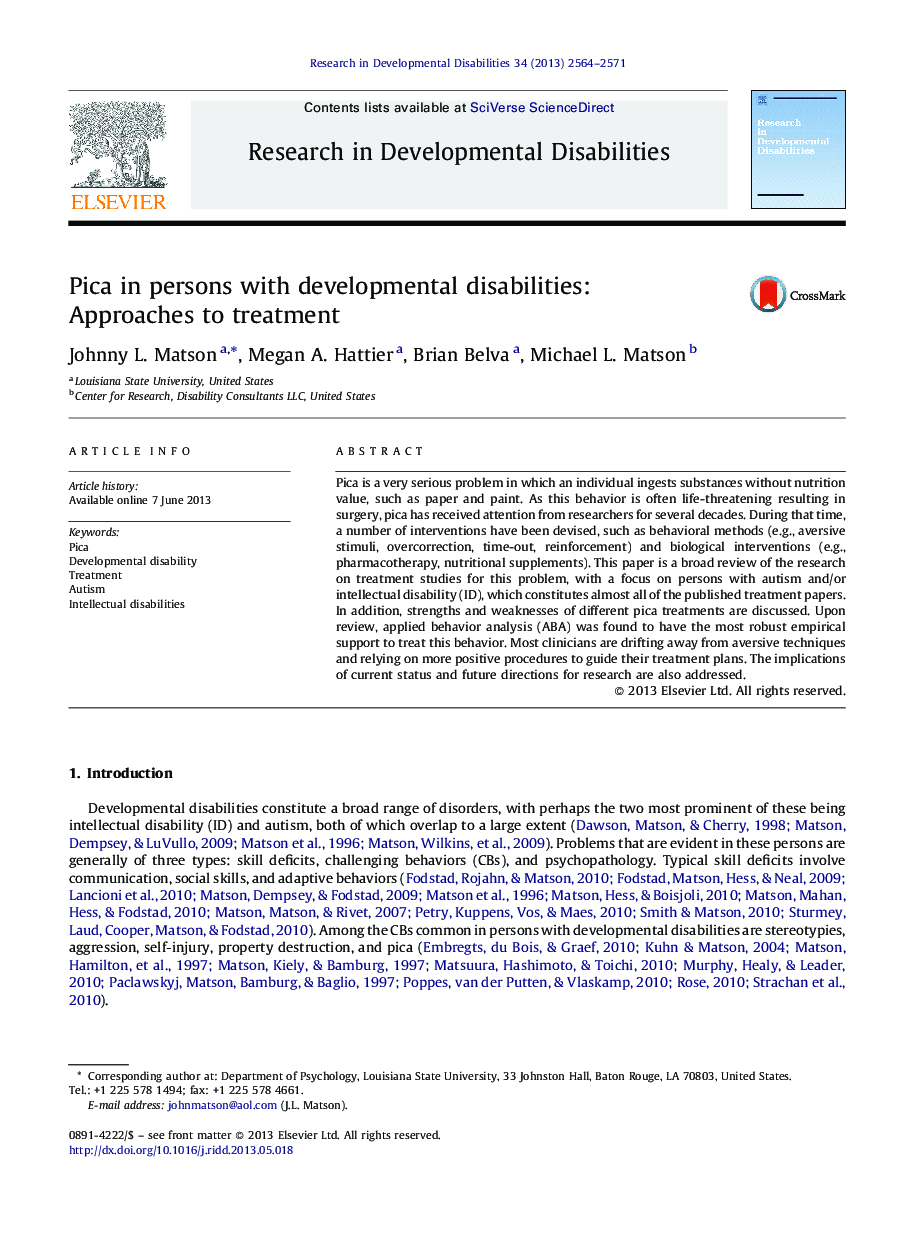| Article ID | Journal | Published Year | Pages | File Type |
|---|---|---|---|---|
| 10317730 | Research in Developmental Disabilities | 2013 | 8 Pages |
Abstract
Pica is a very serious problem in which an individual ingests substances without nutrition value, such as paper and paint. As this behavior is often life-threatening resulting in surgery, pica has received attention from researchers for several decades. During that time, a number of interventions have been devised, such as behavioral methods (e.g., aversive stimuli, overcorrection, time-out, reinforcement) and biological interventions (e.g., pharmacotherapy, nutritional supplements). This paper is a broad review of the research on treatment studies for this problem, with a focus on persons with autism and/or intellectual disability (ID), which constitutes almost all of the published treatment papers. In addition, strengths and weaknesses of different pica treatments are discussed. Upon review, applied behavior analysis (ABA) was found to have the most robust empirical support to treat this behavior. Most clinicians are drifting away from aversive techniques and relying on more positive procedures to guide their treatment plans. The implications of current status and future directions for research are also addressed.
Related Topics
Life Sciences
Neuroscience
Behavioral Neuroscience
Authors
Johnny L. Matson, Megan A. Hattier, Brian Belva, Michael L. Matson,
